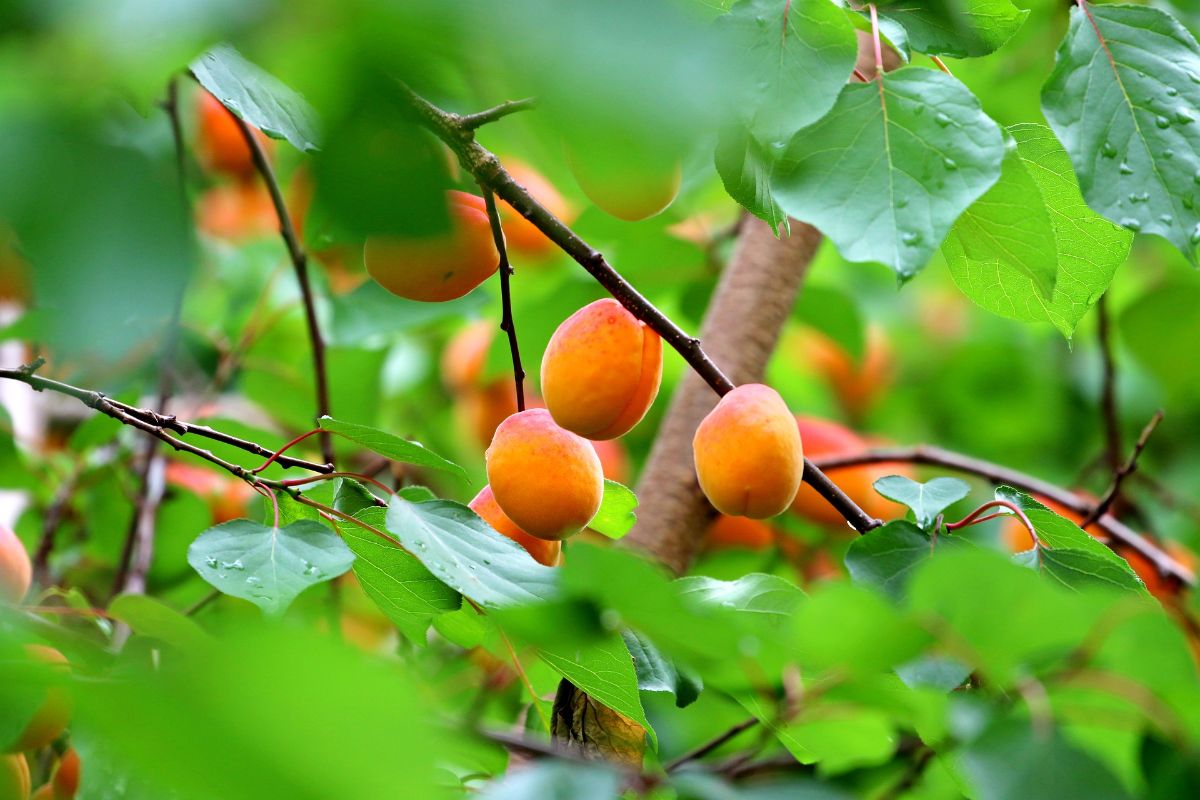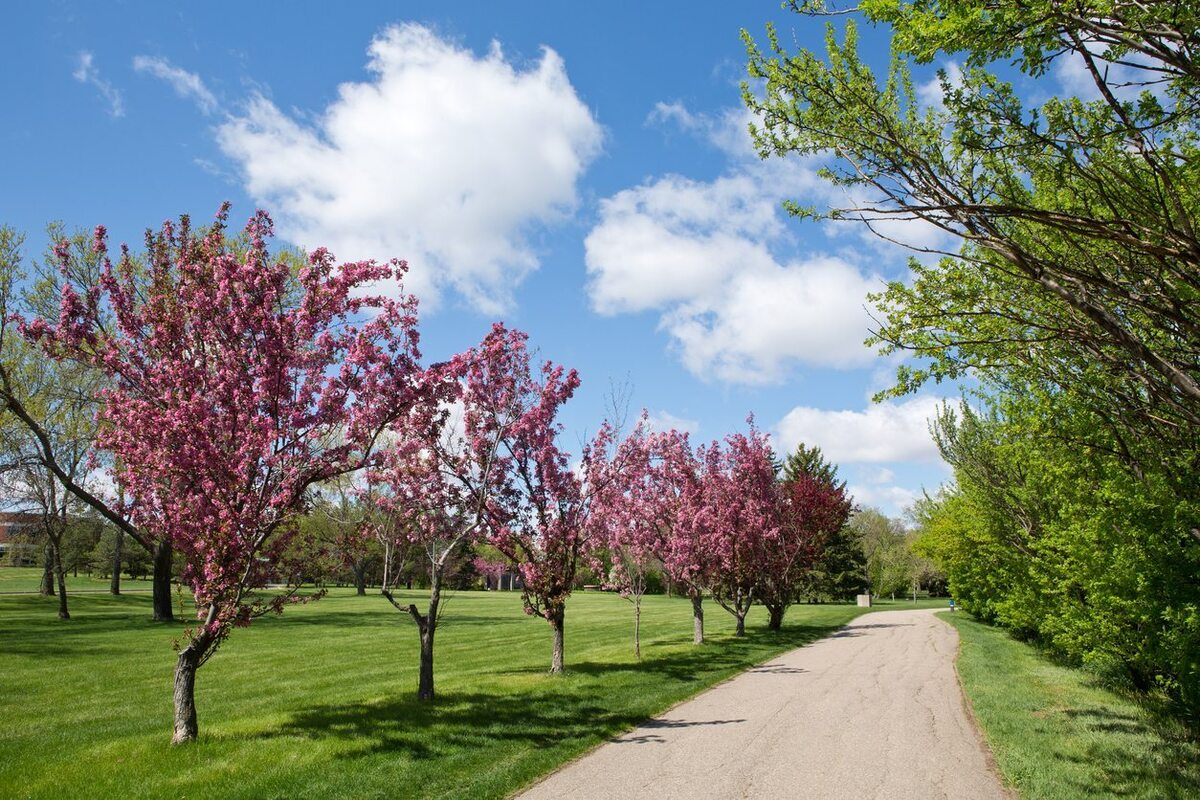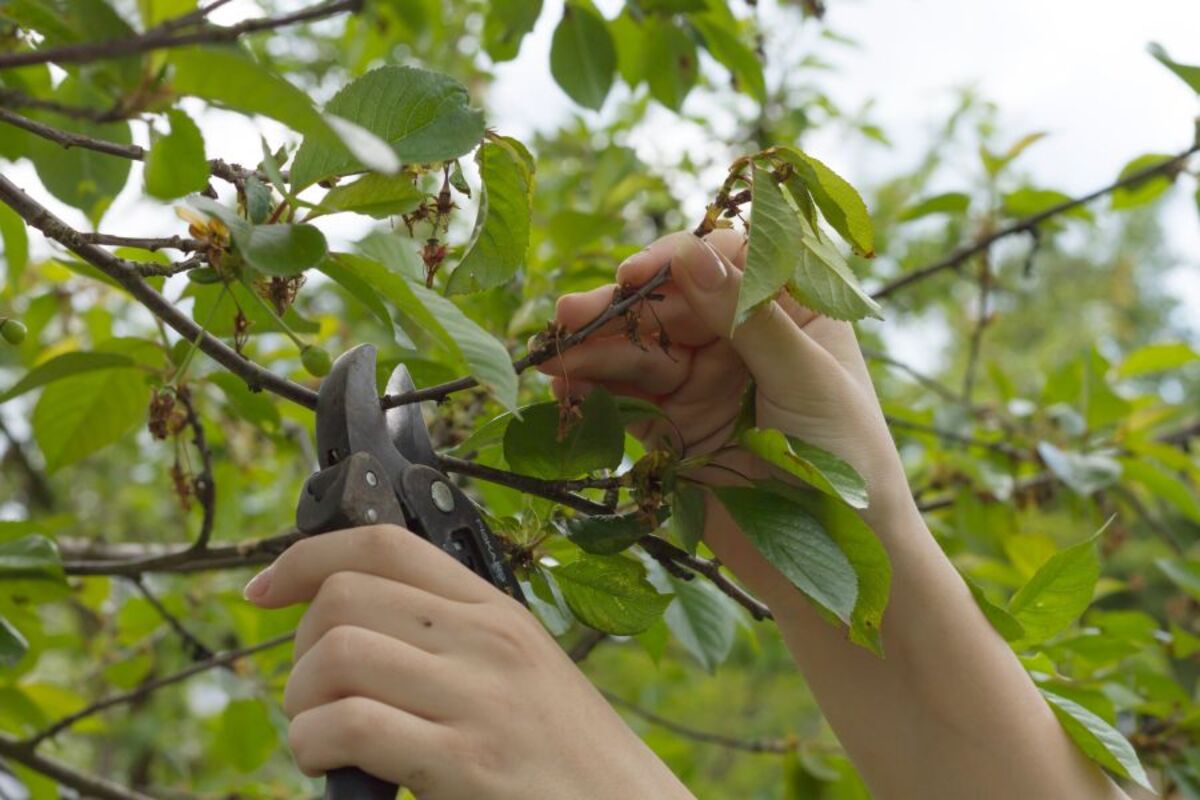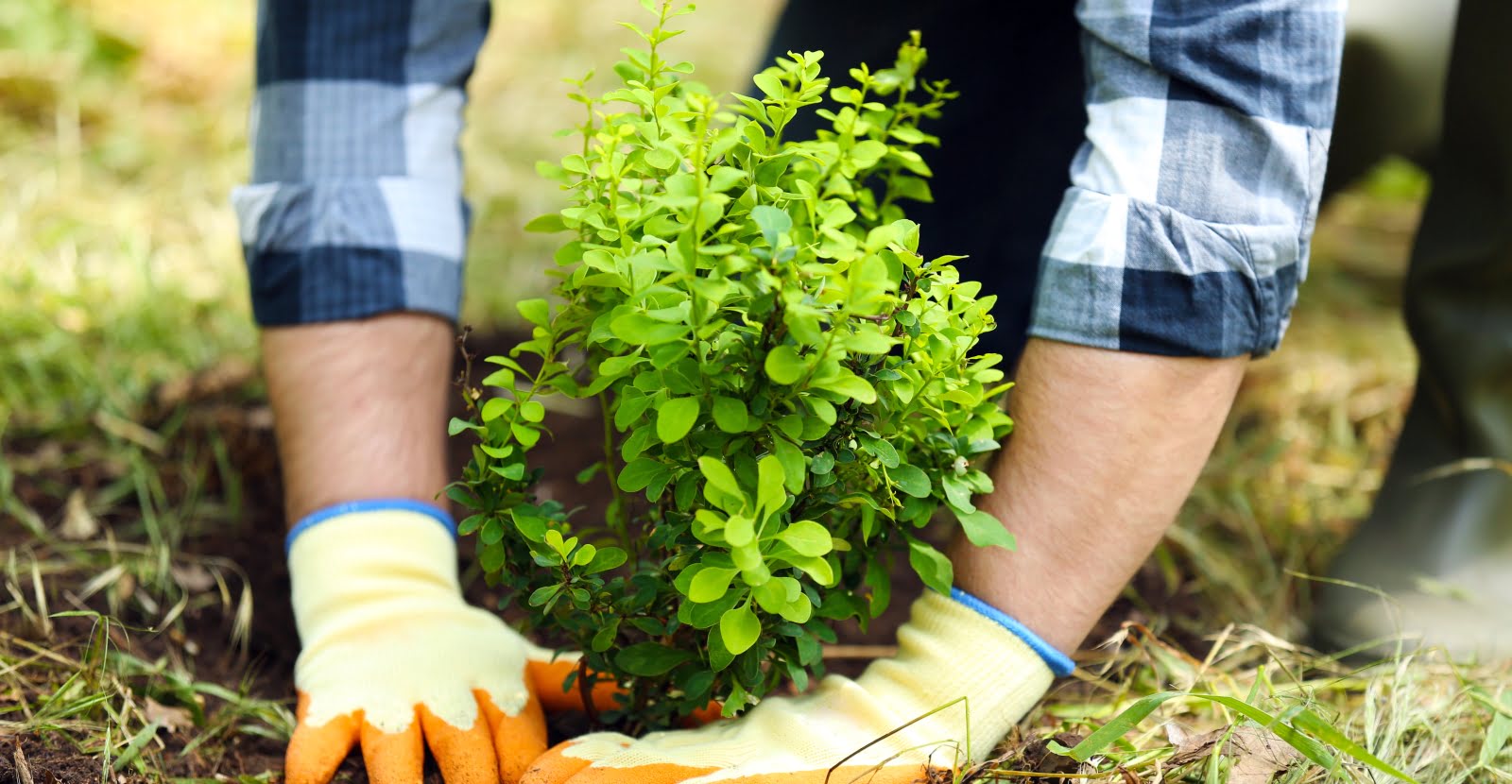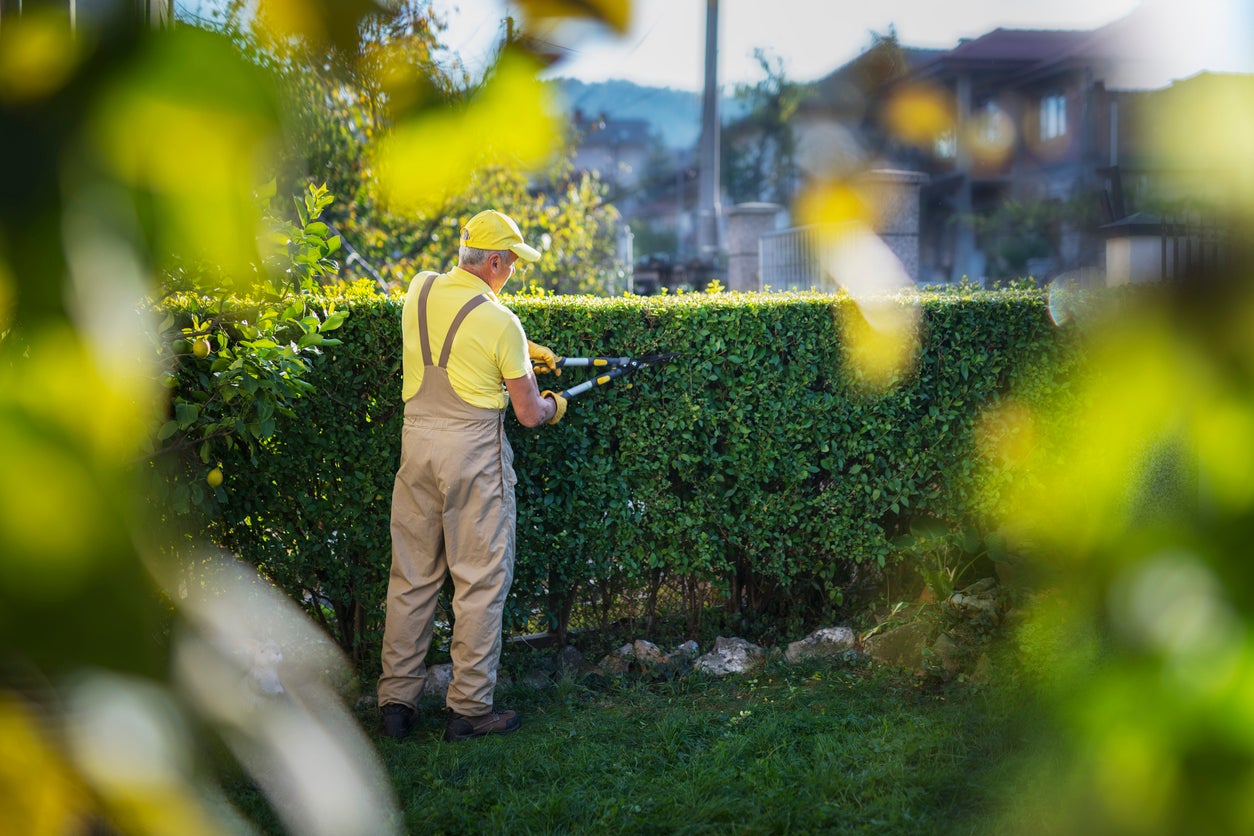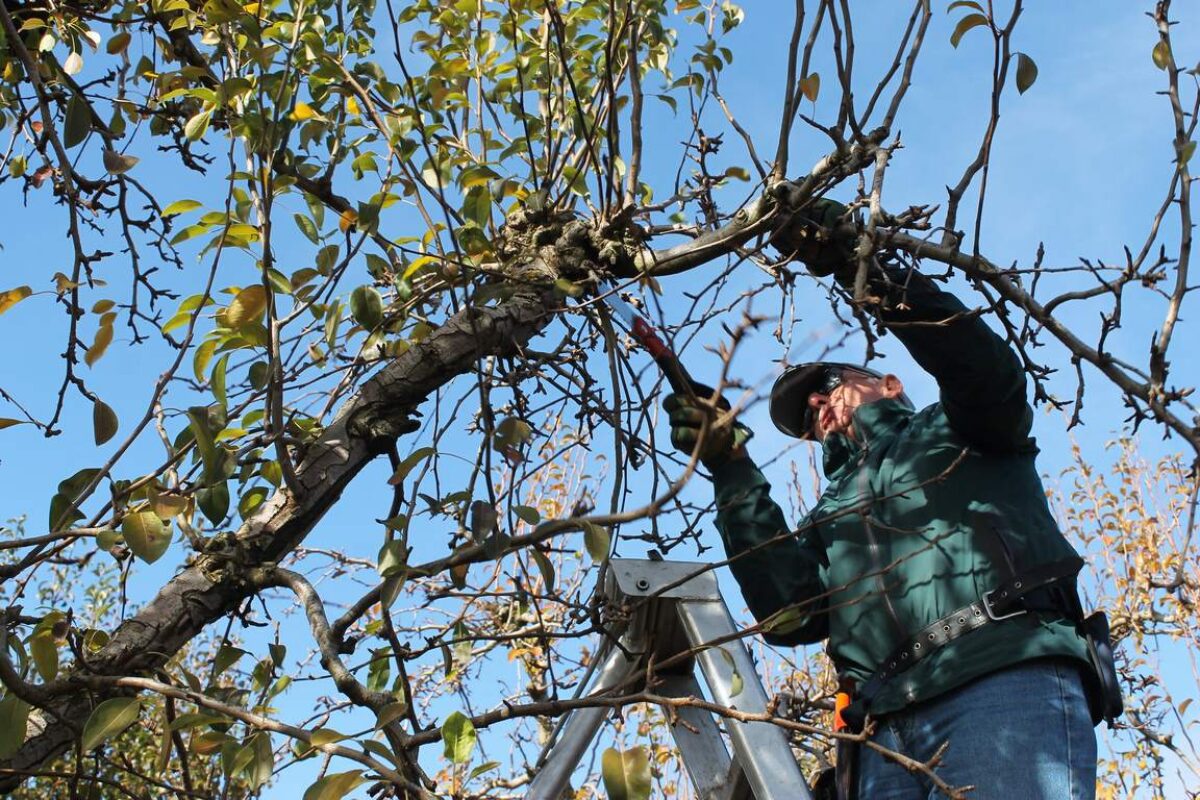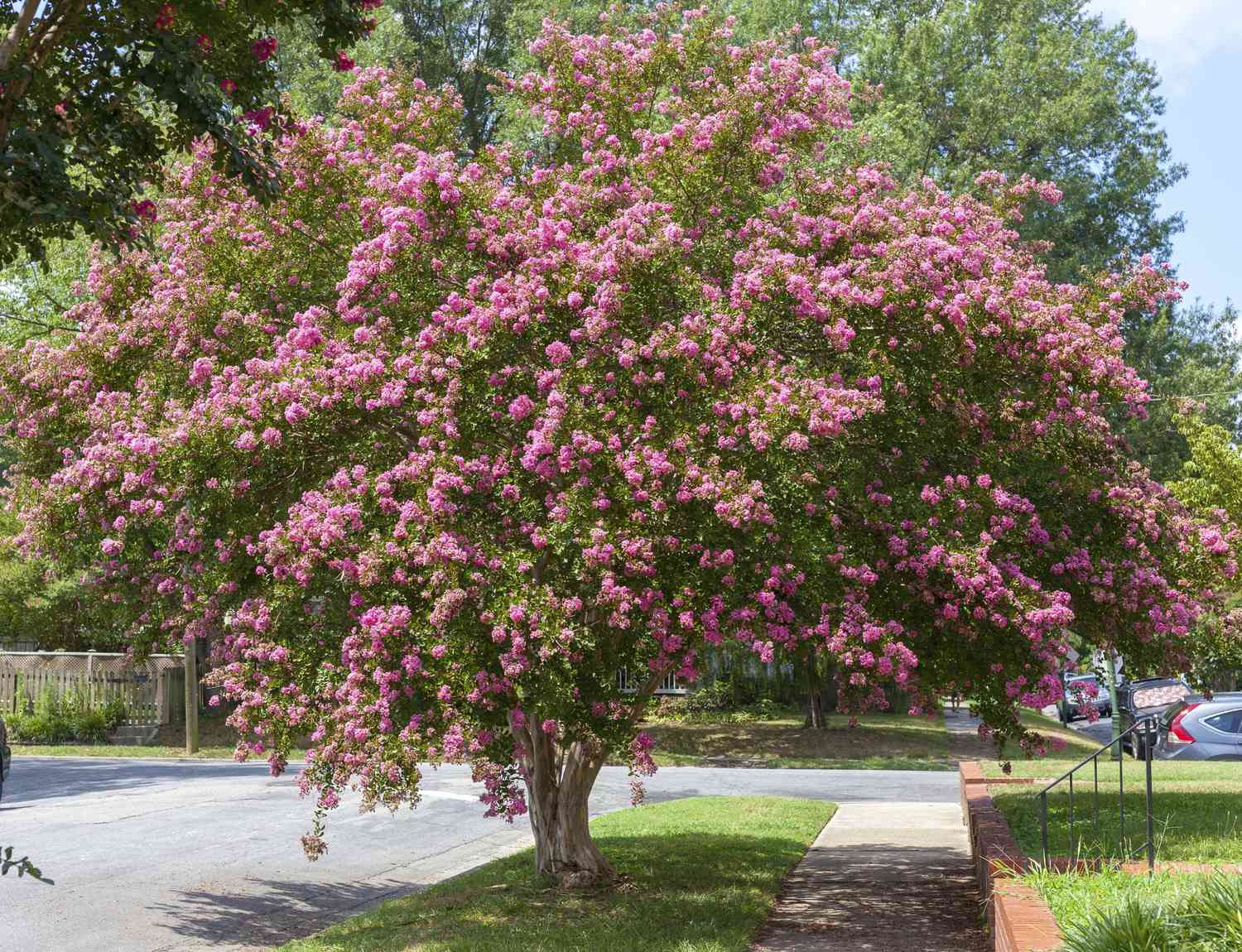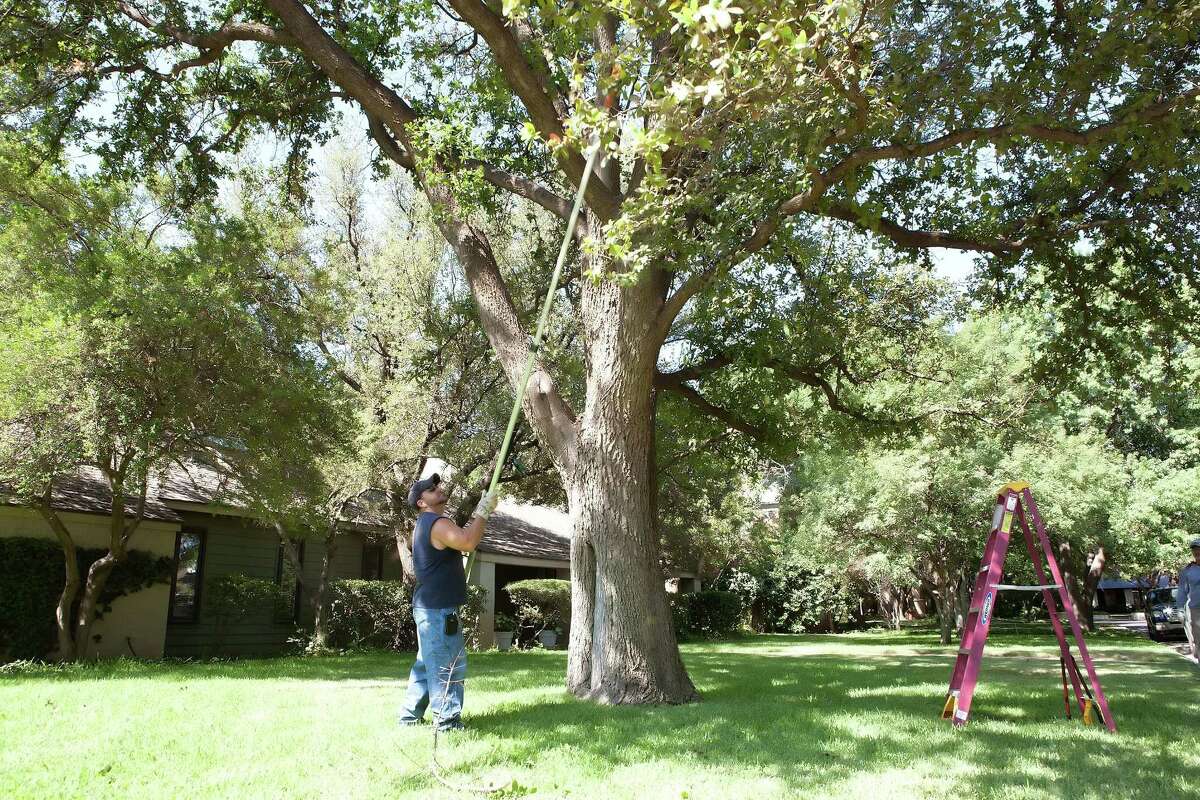Home>Gardening Techniques>Plant Care>When Is The Best Time To Prune Maple Trees


Plant Care
When Is The Best Time To Prune Maple Trees
Modified: January 22, 2024
Properly care for your maple tree by learning the best time to prune. Discover essential tips and techniques for plant care to ensure a healthy and thriving tree.
(Many of the links in this article redirect to a specific reviewed product. Your purchase of these products through affiliate links helps to generate commission for Chicagolandgardening.com, at no extra cost. Learn more)
Table of Contents
Introduction
Welcome to our comprehensive guide on pruning maple trees! If you’re a plant enthusiast or a homeowner with a maple tree in your yard, you may already know the importance of proper pruning to maintain its health and appearance. Pruning is a horticultural practice that involves selectively removing specific branches or parts of a tree, and when done correctly, it can have numerous benefits.
Maple trees, known for their stunning foliage and attractive structure, are a popular choice for landscaping. However, like any other tree, they require ongoing care and maintenance to thrive. Pruning plays a crucial role in promoting their growth, improving aesthetics, and ensuring longevity.
In this article, we will delve deeper into the art of pruning maple trees and share valuable insights on the best time to prune, factors to consider, techniques to employ, and signs of overpruning. Whether you’re a seasoned gardener or a beginner, this guide aims to equip you with the knowledge you need to care for your maple tree effectively.
Before we explore the intricacies of pruning, let’s take a moment to understand maple trees and their unique characteristics.
Understanding Maple Trees
Maple trees belong to the Acer genus and are known for their beautiful leaves, vibrant colors, and distinctive shape. They are deciduous trees, meaning they shed their leaves during the fall and remain leafless during the winter months. Maple trees are native to the northern hemisphere and can be found in various regions across the world.
There are numerous species of maple trees, each with its own characteristics. Some popular species include the sugar maple (Acer saccharum), Japanese maple (Acer palmatum), red maple (Acer rubrum), and silver maple (Acer saccharinum).
Maple trees typically have a rounded or oval-shaped crown with dense foliage that provides ample shade. Their leaves are usually palm-shaped with distinct lobes, and their colors can range from vibrant green in the warmer months to fiery red, orange, or yellow during the fall.
Maple trees prefer well-drained soil and thrive in areas with moderate temperatures and ample sunlight. They are relatively low-maintenance trees and can adapt to various soil types and climatic conditions, making them a popular choice for landscaping.
In addition to their aesthetic appeal, maple trees provide numerous ecological benefits. They help in purifying the air by absorbing pollutants and releasing oxygen. They also provide a habitat for birds and other wildlife, and their leaf litter acts as a natural mulch, enriching the soil and promoting healthy microbial activity.
Understanding the unique characteristics of maple trees is essential when it comes to pruning them effectively. Let’s explore why pruning is vital for the overall health and well-being of your maple tree in the next section.
The Importance of Pruning
Pruning is a fundamental aspect of maple tree care and management. It involves the selective removal of branches or parts of the tree to promote healthy growth, maintain an appealing shape, and ensure structural stability. Pruning not only enhances the visual aesthetics of the tree but also contributes to its overall health and longevity.
One of the main reasons to prune a maple tree is to improve its structure. Removing weak or damaged branches helps reduce the risk of them breaking and causing potential harm to people or property. Pruning also helps maintain the desired form of the tree, preventing it from becoming overgrown or misshapen over time.
Another significant benefit of pruning is increased air circulation and sunlight penetration. By removing dense or overcrowded branches, you create space for adequate air movement within the tree’s canopy. This helps prevent the development of fungal diseases, such as powdery mildew or anthracnose, which thrive in humid and stagnant conditions. Improved sunlight penetration also promotes better photosynthesis, leading to stronger and healthier growth.
Pruning also plays a role in improving fruit or flower production in certain maple tree species. By selectively removing branches or buds, you can redirect the tree’s energy towards the development of flowers or fruit, resulting in a more abundant and visually appealing display.
Regular pruning can also help identify and address potential issues early on. By inspecting the tree’s branches and foliage during the pruning process, you can spot signs of disease, pest infestation, or other health issues. This allows for prompt treatment and prevents the problem from spreading to other parts of the tree or to neighboring plants.
Furthermore, pruning can contribute to the safety and well-being of your property. Overgrown branches can pose a risk to structures, such as buildings, fences, or power lines. By removing these branches, you reduce the chances of them causing damage during storms or strong winds.
While pruning offers numerous benefits, it is essential to approach it with caution and knowledge. Improper pruning techniques or excessive removal of branches can harm the tree and negate the intended benefits. Understanding the factors to consider and the best time to prune a maple tree will ensure the process is carried out effectively. We will explore these aspects in the upcoming sections.
Factors to Consider
Before pruning a maple tree, it is important to consider several factors to ensure the process is carried out effectively and with minimal impact on the tree’s health. Understanding these factors will help you make informed decisions and achieve the desired results. Here are some key factors to consider:
1. Tree Health:
The overall health of the maple tree should be evaluated before pruning. If the tree is stressed, diseased, or weakened, it may not be the ideal time for pruning. Pruning during such periods can further weaken the tree or hinder its ability to recover. It is best to address any underlying health issues before proceeding with pruning.
2. Growth Cycle:
Maple trees have specific phases in their growth cycle, and understanding these stages is crucial for effective pruning. Pruning during active growth periods, such as spring and summer, can stimulate new growth. On the other hand, pruning during dormancy in late fall or winter may be less stimulating but can help shape the tree’s structure.
3. Tree Age:
The age of the maple tree can also influence pruning decisions. Young maple trees may require more frequent pruning to train their growth and establish a strong structure. Older trees may need pruning to remove dead, damaged, or diseased branches and maintain their overall health and appearance.
4. Tree Size and Location:
The size and location of the maple tree should be considered when planning pruning activities. Trees located near structures, power lines, or other valuable assets may require careful pruning to prevent potential damage. Additionally, the size of the tree can impact the complexity and scale of pruning, with larger trees potentially requiring professional assistance.
5. Pruning Goals:
Clearly define your pruning goals before starting. Are you pruning for maintenance, aesthetics, or to address specific issues? Having a clear objective in mind will help guide the pruning process and ensure that the desired results are achieved.
By considering these factors, you can make informed decisions and create an effective pruning plan for your maple tree. However, it is equally important to determine the best time to prune, as this can greatly impact the tree’s response and overall success of the pruning efforts. We will explore the optimal time for pruning maple trees in the next section.
Best Time to Prune a Maple Tree
The timing of pruning plays a crucial role in the success of the process and the overall health of a maple tree. Pruning at the right time maximizes the tree’s ability to heal and minimizes stress. While the precise timing may vary based on factors such as the climate and specific species of maple tree, here are some general guidelines to consider:
1. Pruning During Dormancy:
The dormant period of a maple tree, typically in late fall or winter, is an ideal time for structural pruning. During this time, the tree is not actively growing, making it less susceptible to diseases and pests. Additionally, with no leaves present, it is easier to assess the structure of the tree and make strategic pruning cuts to shape its form.
2. Avoid Pruning in Spring:
Maple trees are known to bleed sap when pruned in early spring. This sap flow can attract insects and create a breeding ground for diseases. It is generally recommended to avoid major pruning during the spring when the sap is flowing vigorously. Instead, focus on minor maintenance pruning during this time.
3. Summer Pruning:
If your primary goal is to control the size or shape of the maple tree, summer pruning can be done. During this period, the tree is in active growth, and pruning can stimulate new growth and direct it in desired directions. However, be mindful not to prune excessively, as it may weaken the tree or lead to water stress during hot summer months.
4. Post-Bloom Pruning:
For maple trees that flower, such as Japanese maples, it is best to prune immediately after the flowering period. This timing allows the tree to recover before entering dormancy and ensures that you don’t inadvertently remove potential blooms for the following year.
It is important to note that these guidelines are general recommendations, and specific species may have unique pruning requirements. Consulting with a local arborist or horticultural expert can provide valuable insights tailored to your specific maple tree and climate.
Remember, regardless of when you prune, always follow proper pruning techniques, such as making clean cuts close to the branch collar, using sharp tools, and sanitizing equipment between cuts to prevent the spread of diseases.
Now that you have an understanding of the best time to prune a maple tree, let’s move on to some essential pruning tips and techniques to help you achieve the desired results.
Pruning Tips and Techniques
Pruning a maple tree requires careful consideration and proper techniques to ensure the health and aesthetics of the tree remain intact. Here are some essential tips and techniques to keep in mind:
1. Use the Correct Tools:
Invest in high-quality, sharp pruning tools designed for tree care. These may include pruning shears, loppers, and pruning saws. Dull or improper tools can damage the branches and make clean cuts more challenging.
2. Follow the Three-Cut Technique:
When removing larger branches, use the three-cut technique to prevent bark tearing and promote proper healing. Start by making an undercut a few inches away from the branch collar, then make a top cut just outside the undercut. Finally, make the final cut just outside the branch collar to remove the stub.
3. Prune for Structure and Clearance:
Focus on pruning branches that affect the overall structure of the tree or pose a risk to people or property. Remove crossing or rubbing branches, as well as those that grow inward or directly towards structures.
4. Maintain the Natural Shape:
Maple trees have their unique growth patterns and aesthetics. When pruning, aim to maintain the tree’s natural shape and avoid excessive thinning, which can affect its overall health and appearance. Keeping the central leader intact is important to maintain the tree’s structural integrity.
5. Remove Dead or Diseased Branches:
Prune out any dead, diseased, or damaged branches to prevent the spread of pests and diseases. Cut back to healthy wood, making sure not to leave stubs that can attract decay-causing organisms.
6. Step Back and Assess:
Take breaks during the pruning process and step back periodically to assess the tree’s overall appearance. This will help you make informed decisions about which branches to remove and ensure a balanced and aesthetically pleasing result.
7. Avoid Over Pruning:
Over pruning, also known as “topping,” should be avoided. Removing a large portion of the canopy can lead to a weak and structurally compromised tree. Prune conservatively, focusing on maintaining the tree’s health and natural form.
Remember, pruning can be an intensive process, especially for larger or older maple trees. If you’re not confident or comfortable with the task, consider hiring a professional arborist who can safely and effectively prune your maple tree.
By following these pruning tips and techniques, you can maintain the health, structure, and beauty of your maple tree. However, it is important to be aware of the signs of overpruning, which we will discuss in the next section.
Signs of Overpruning
While pruning maple trees is essential for their health and aesthetics, it is equally important to avoid overpruning. Overpruning, also known as excessive or improper pruning, can have detrimental effects on the tree’s wellbeing and overall growth. Here are some signs to watch out for that indicate overpruning:
1. Excessive Loss of Foliage:
If you notice a significant loss of leaves after pruning or if the tree appears sparse and bare, it may indicate that too many branches were removed. This excessive loss of foliage can weaken the tree and hinder its ability to produce energy through photosynthesis.
2. Decline in Vigor and Growth:
Overpruning can stress the tree, leading to a decline in its vigor and growth. If you observe stunted growth, fewer new shoots, or a general lack of vitality in the tree after pruning, it may be a sign that it was pruned too severely.
3. Increased Risk of Sunburn and Stress:
Overpruning can expose the tree’s inner branches and trunk to direct sunlight, leading to sunburn and increased stress. Sunburn manifests as patches of dry or dead bark, and the tree may struggle to recover from this damage.
4. Susceptibility to Pest and Disease Infestations:
When a tree is overpruned, it becomes weakened and more vulnerable to pest and disease infestations. The loss of branches disrupts the tree’s natural defense mechanisms and compromises its ability to fend off insects, fungi, and other pathogens.
5. Structural Instability:
Excessive pruning can compromise the structural integrity of the tree. Removing too many branches can disrupt the balance and stability, making the tree more susceptible to breakage and damage, especially during severe weather conditions.
6. Delayed or Lack of Flowering/Fruit Production:
If your maple tree typically produces flowers or fruit and you notice a significant reduction or absence of these features after pruning, it may indicate overpruning. Removing too many buds or branches that would have produced flowers or fruit can affect the tree’s reproductive capabilities.
It is crucial to strike a balance between pruning to achieve desired results and ensuring that the tree’s health and vitality are not compromised. If you suspect that your maple tree has been overpruned, consult with a professional arborist who can assess the tree’s condition and provide guidance on potential remedies.
Now that we have covered the signs of overpruning, let’s conclude our comprehensive guide on pruning maple trees with a summary of the important points we have discussed.
Conclusion
Pruning maple trees is an essential practice for maintaining their health, appearance, and structural integrity. By understanding the unique characteristics of maple trees and following proper pruning techniques, you can ensure the longevity and beauty of these beloved trees in your yard or landscape.
It is important to consider factors such as tree health, growth cycle, age, and pruning goals when planning your pruning activities. Timing is key, with dormant periods being ideal for structural pruning, while summer and post-bloom periods can be suitable for specific goals like tree shape control or improved flowering.
Remember to use the correct tools, follow the three-cut technique, and maintain the tree’s natural shape during the pruning process. Avoid overpruning, as it can weaken the tree, reduce its vigor, and make it more susceptible to pests and diseases.
Signs of overpruning include excessive loss of foliage, decline in growth, increased risk of sunburn and stress, vulnerability to pest and disease infestations, structural instability, and lack of flowering or fruit production. If you observe these signs, seek guidance from a professional arborist to assess the tree’s condition and explore potential remedies.
With proper care and pruning, your maple tree will continue to provide shade, aesthetic appeal, and ecological benefits for many years to come. Remember to always be mindful of the tree’s health, respect its natural form, and enjoy the beauty and benefits it brings to your outdoor environment. Happy pruning!

